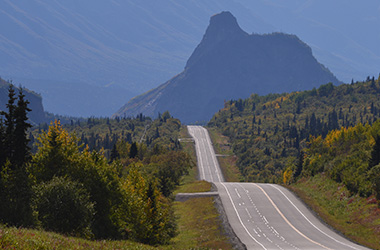Main Menu
- Home
- Products
- Applications
- Product Support
- Service
- Learn
- Product News
- About Us
- Contact Us
 What comes to mind when you think of a soundscape? National Parks in the United States exist to preserve natural, cultural, and historical treasures. Have you ever considered
that sound is a part of that treasure? People visit parks and wild places for various reasons: some to escape the hustle and bustle of everyday life, some to experience wildlife, and some to learn about their history and heritage. In each case, the
soundscape of the park is an important part of the visitor experience. As such, protecting, maintaining, and restoring natural acoustical environments is essential.
What comes to mind when you think of a soundscape? National Parks in the United States exist to preserve natural, cultural, and historical treasures. Have you ever considered
that sound is a part of that treasure? People visit parks and wild places for various reasons: some to escape the hustle and bustle of everyday life, some to experience wildlife, and some to learn about their history and heritage. In each case, the
soundscape of the park is an important part of the visitor experience. As such, protecting, maintaining, and restoring natural acoustical environments is essential.
Within the National Park Service, the Natural Sounds and Night Skies Division is charged with measuring and protecting the unique soundscape of each park. Watch this video to
learn how the Park Service collects sound measurements in remote areas. Explore the many reasons why the cultural, historical, and natural soundscapes
found in America’s National Parks are important resources that deserve our protection.
Efforts are underway in our National Parks to preserve the sights and sounds that make up our natural and cultural history.
From measuring current baseline levels to studying the impact of construction inside the park and activities around park borders, the National Park Service takes sound seriously.
These essential animal behaviors and more can be adversely affected by noisy environments. Long-term park noise studies provide baseline data and allow for the development of noise management plans that utilize quantifiable measurements.
Today, noise consultants and park employees are carrying out long-term noise studies using reliable and energy-efficient noise monitoring solutions from Larson Davis[1]. Larson Davis offers a family of noise monitoring systems with various power, communication, and sound recording options that can be implemented to suit the needs of various types of park and wildlife noise studies.
Larson Davis’ long-term, permanent, portable, and handheld monitoring systems have options that are critical for use in all kinds of wilderness and park environments:
Portable monitoring systems can be deployed rapidly and easily moved from one data acquisition site to another. They include weather-resistant enclosures and outdoor microphone options. Our handheld, Class 1 sound level meters can be used for on-site evaluation and logging of noise levels.
Information on park units is available here, as well as specifics for planning your next trip.
[1]A small sample of technical papers written with data collected on Larson Davis equipment is cited below:
The views and opinions expressed in this article are those of the author / Larson Davis and do not necessarily represent the official policy or position of the National Park Service.